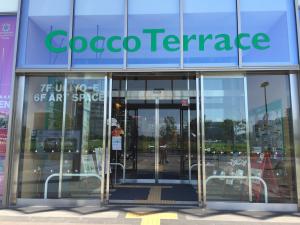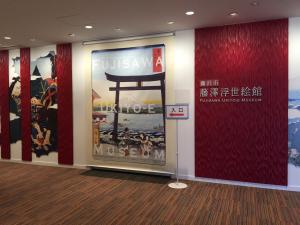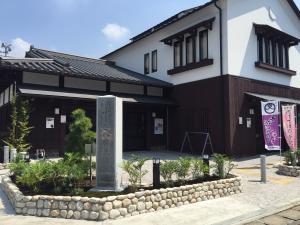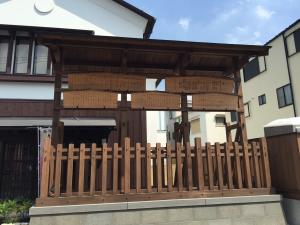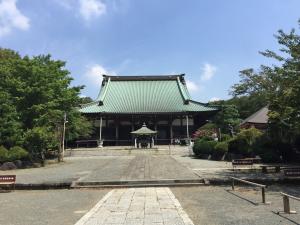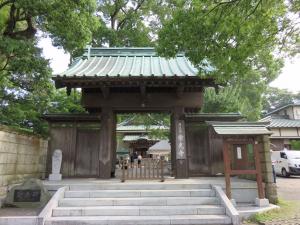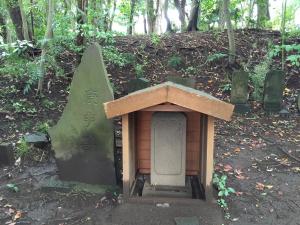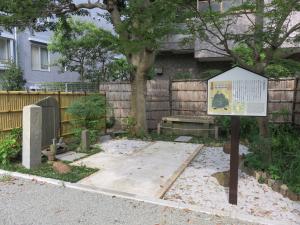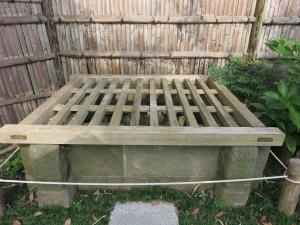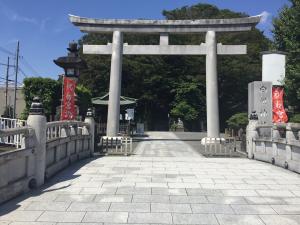ホーム > 観光・名産 > 観光・レジャー > 観光・名所 > 観光情報ひろば湘南 > Fujisawa: "Fujisawa-juku" post station depicted in ukiyo-e wood block print and the legend of Minamoto-no Yoshitsune
更新日:2026年1月13日
ここから本文です。
Fujisawa: "Fujisawa-juku" post station depicted in ukiyo-e wood block print and the legend of Minamoto-no Yoshitsune
This page introduces model sightseeing courses of the Shonan Region from various perspectives.
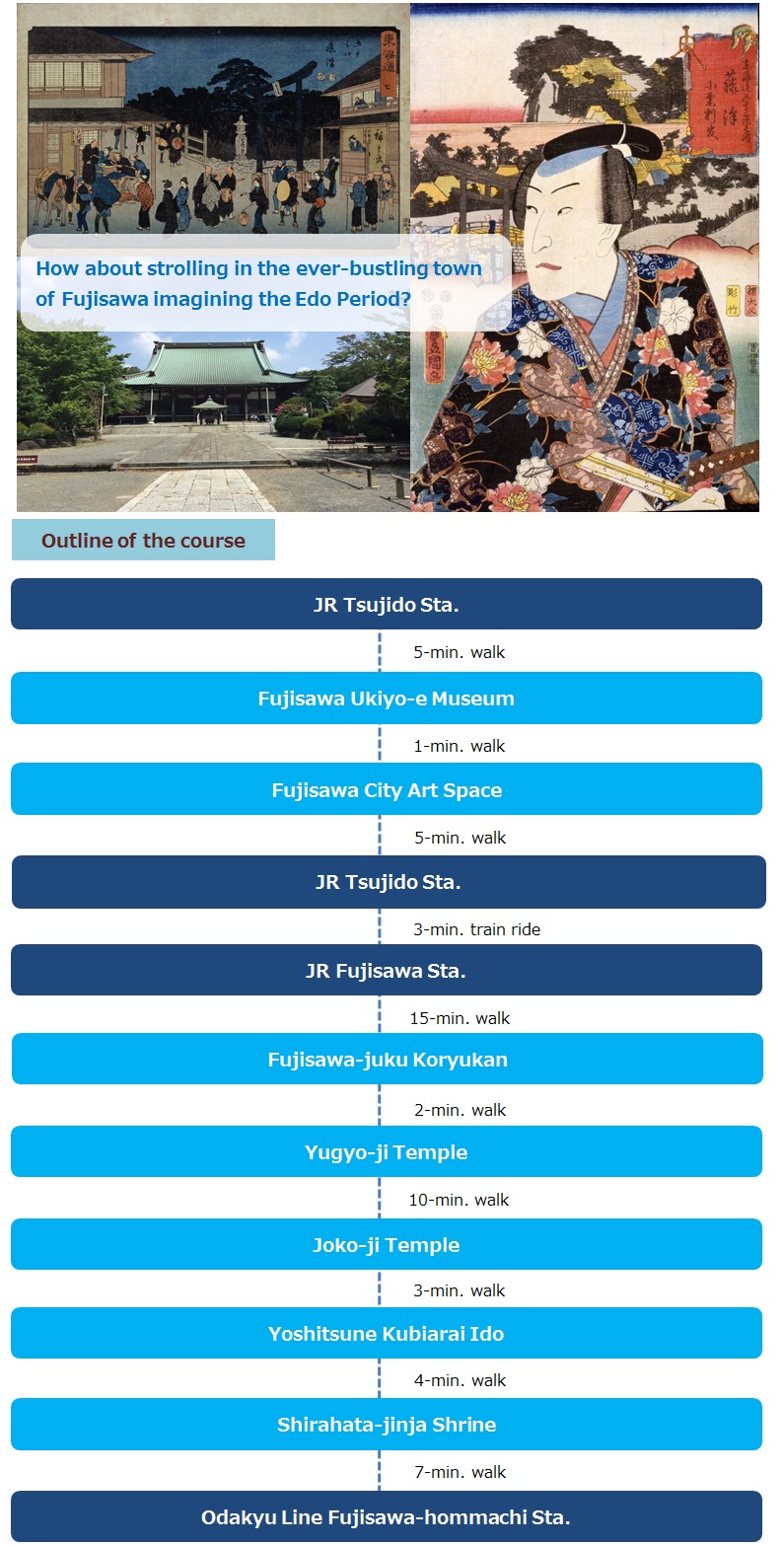
* Approx. required time indicated.
* This model course is as of September 2016.
Course guide
JR Tsujido Sta.
- 5 min. waik -
1. Imagine Fujisawa in the Edo Period at Fujisawa Ukiyo-e Museum
This museum was opened in July 2016 on the 7F of Cocco Terrace Shonan, five-minute walk from the stylish JR Tsujido Sta.
In addition to the collection the City acquired to commemorate the 40th anniversary of municipalization, the museum houses 1,500 items related to Fujisawa, including ukiyo-e.
Fujisawa, a post station (Fujisawa-juku) on the Tokaido Road, was picked up as subject of ukiyo-e by many famous artists in the Edo Period. Fujisawa-juku bustled with many people visiting Enoshima Island in Fujisawa City and Mt. Oyama in Isehara City for the purpose of pilgrimage and holiday-making.
Fujisawa Ukiyo-e Museum showcases items linked to Fujisawa from various viewpoints so that anybody can enjoy them. They also have English captions. Visitors can learn must-see items by the introduction video played on a big screen.
Watching the ukiyo-e, you may know that the people in the Edo Period were impressed with the view of Enoshima and the Shonan beach just like we are now. When you discover the charms of Fujisawa at Ukiyo-e Museum, why don’t you go out for a walk to the Fujisawa-juku on the former Tokaido?
〔See the map of Fujisawa Ukiyo-e Museum〕
〔Website of Fujisawa Ukiyo-e Museum 〕
- 1-min. walk -
2. Enjoy art works at Fujisawa City Art Space
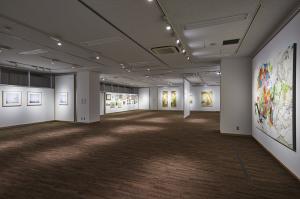
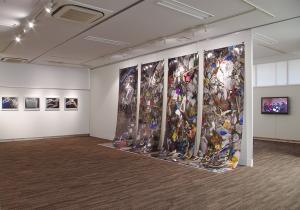
Before heading for Fujisawa-juku, drop in at Fujisawa City Art Space, or FAS, also in Cocco Terrace Shonan.
FAS provides young artists of Shonan area with activity space and holds exhibitions to support them.
One of the benefits of FAS is that the art works created in this Residence Room are displayed in the exhibition room. You can see the process of creation from the beginning to the end here.
They have workshops on a regular basis, which are popular with children.
(For schedule of exhibitions and workshops, please visit the following website.)
〔See the map of Fujisawa City Art Space〕
〔Website of Fujisawa City Art Space (in Japanese)〕
- 5 min. walk -
JR Tsujido Sta.
- 3 min. train ride -
JR Fujisawa Sta.
- 15 min. walk -
3. Learn the history of Fujisawa-juku at Fujisawa-juku Koryukan Museum
Let’s take a train from Tsujido Sta. to Fujisawa Sta. and have a walk around former Fujisawa-juku.
First, drop in at Fujisawa-juku Koryukan Museum, 15-minute walk from the north exit of JR Fujisawa Sta. The Museum was opened in 2016 as a “place to get in touch with history and culture of former post station Fujisawa-juku on Tokaido Road”.
The museum displays panels explaining history of Fujisawa-juku and associated items with the post station (explanation of the items are in Japanese).
There is a space for visitors to take a rest or have brought-in meals. You can also purchase have “Fujisawa-juku boxed lunch” by in-advance order. (Minimum order is 10 boxes, order through the website.)
Outside the Museum, there is a place for replicated Kosatsu, or notice board, which was used to issue government order, etc. Old time passengers must have seen various orders right here.
〔See the map of Fujisawa-juku Koryukan Museum〕
〔Website of Fujisawa-juku Koryukan Museum (in Japanese)〕
- 2 min. walk -
4. Trace the history of Yugyo-ji Temple
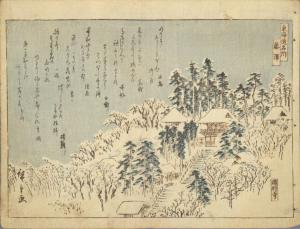
The entrance of Yugyo-ji Temple, the head temple of Jishu sect of Buddhism, is two-minute walk from Fujisawa-juku Koryu-kan.
Yugyo-ji was often portrayed in ukiyo-e by famous artists. The official name is Shojoko-ji Temple. The one on the left is a work by Utagawa Hiroshige depicting Yugyo-ji in snow.
There are many other must-sees in the wide grounds. The Homotsu-kan Treasure House, which has valuable cultural properties including a national treasure, is currently open on Saturdays, Sundays, Mondays and the national holidays.
You can also enjoy seasonal nature. The large gingko tree aged 700 years turns yellow in autumn, and cherry trees along Iroha-zaka slope make a pale pink tunnel from the entrance gate and yulans by the Hojo-ike Pond bear beautiful blossoms in spring.
〔See the map of Yugyo-ji Temple〕
〔Website of Yugyo-ji Temple〕
- 10 min. walk -
5. Trees of Joko-ji Temple and Benkei-zuka in the park
Cross Yugyo-ji Bridge, turn right and walk along former Tokaido Road.
Walk along the road, take a left at the Fujisawa-minami Fire Station Honcho Branch and you will find Joko-ji Temple. The temple is surrounded by many trees which are designated as natural monument by the City. It seems from outside the gate that the temple is covered by a thick forest.
Time goes by very slowly here. Among the many trees, like oak and tabu, the tall Japanese nutmeg is one of the 100 selected trees of Kanagawa.
Established in 1572, long before Tokaido Road was constructed, Joko-ji Temple had watched Fujisawa-juku’s development.
〔See the map of Joko-ji Temple〕
After relaxing in the trees of Joko-ji Temple, get back to former Tokaido and turn left at Saibikan. In the park south of Joko-ji, there is Benkei-zuka monument. It is the monument dedicated to Benkei, who respected Minamotono Yoshitsune and served him until his death. There are many legends based on the episode of Benkei and Yoshitsune. Let’s see why Benkei-zuka is here.
Please refrain from entering the graveyard and main shrine without permission. Ask the office when you would like to see inside.
Do not go through the site of Joko-ji Temple to go to Benkei-zuka, but get back to Tokaido once and take the route by Saibikan.
- 3 min. walk -
6. Learn the legend of Yoshitsune at Yoshitsune Kubiarai-ido
Get back to former Tokaido with the unsolved mystery of Benkei-zuka and walk further. When you turn right at the condominium at a little short of Shirahata crossing, there is a little park which has “Yoshitsune Kubiarai-ido”, which literally means a well used to wash the cut-off head of Yoshitsune.
Back in 1189, Minamotono Yoshitsune ran from pursuit of his brother Yoritomo all the way to Hiraizumi in northern Japan, where he killed himself. Later on, Yoshitsune’s head was brought to Koshigoeno-ura beach, and confirmed to be really Yoshitsune’s after examined.
This is the story written in “Azuma Kagami”, a history book made by Kamakura Shogunate. It is not clear what happened to the head after this. But in Fujisawa, legend goes that the head was thrown away at Koshigoe beach, went up Sakai River or was carried by a golden turtle to reach Shirahata River. People were sorry about him and purified the head at this well.
The above-mentioned Benkei-zuka was made to commemorate the legend that the spirit of Benkei flew here following his master.
What has become of Yoshitsune after this? Let’s keep walking and see.
〔See the map of Yoshitsune Kubiarai-ido〕
- 4 min. walk -
7. Shirahata-jinja Shrine, guardian deity of Fujisawa-juku
Going back to the Former Tokaido Road, turn right at the Shirahata crossing and walk for a while, you will arrive at Shirahata-jinja Shrine.
The head purified at the well is said to have been buried here in Shirahata-jinja Shrine. Yoshitsune is enshrined together with the existing older deities of the Shrine.
There are white wisterias called “Yoshitsune-fuji” in the Shrine and show beautiful flowers in May.
Every year, yudate-kagura, a ritual designated as an important intangible folk cultural property of the City, attracts many people. In the end of October, priests perform dance in dedication to the god and sprinkle hot water on worshippers to ward off evil and invite luck.
Shirahata-jinja Shrine used to be a guardian deity of Fujisawa-juku in the Edo Period.
Many people come and go through Fujisawa-juku of Tokaido Road just like the old days. Why don’t you walk through Fujiwasa-juku which has various legends?
〔See the map of Shirahata-jinja Shrine〕
〔Website of Shirahata-jinja Shrine (in Japanese)〕
- 7 min. walk -
Odakyu Line Fujisawa-hommachi Sta.
Other information on Fujiwasa City
There are many other must-see spots than those introduced in this model course.
To see “Discover Fujisawa”, tourist information guide of Fujisawa City in multiple languages, click here.
To search restaurants in Fujisawa in multiple languages, including Japanese, click here.
To see Electronic Museum Miyunet Fujisawa to learn the past and present of Fujisawa, click here (in Japanese).
このページに関するお問い合わせ先
企画調整部 商工観光課
電話 0463-45-3193
このページの所管所属は 湘南地域県政総合センターです。
